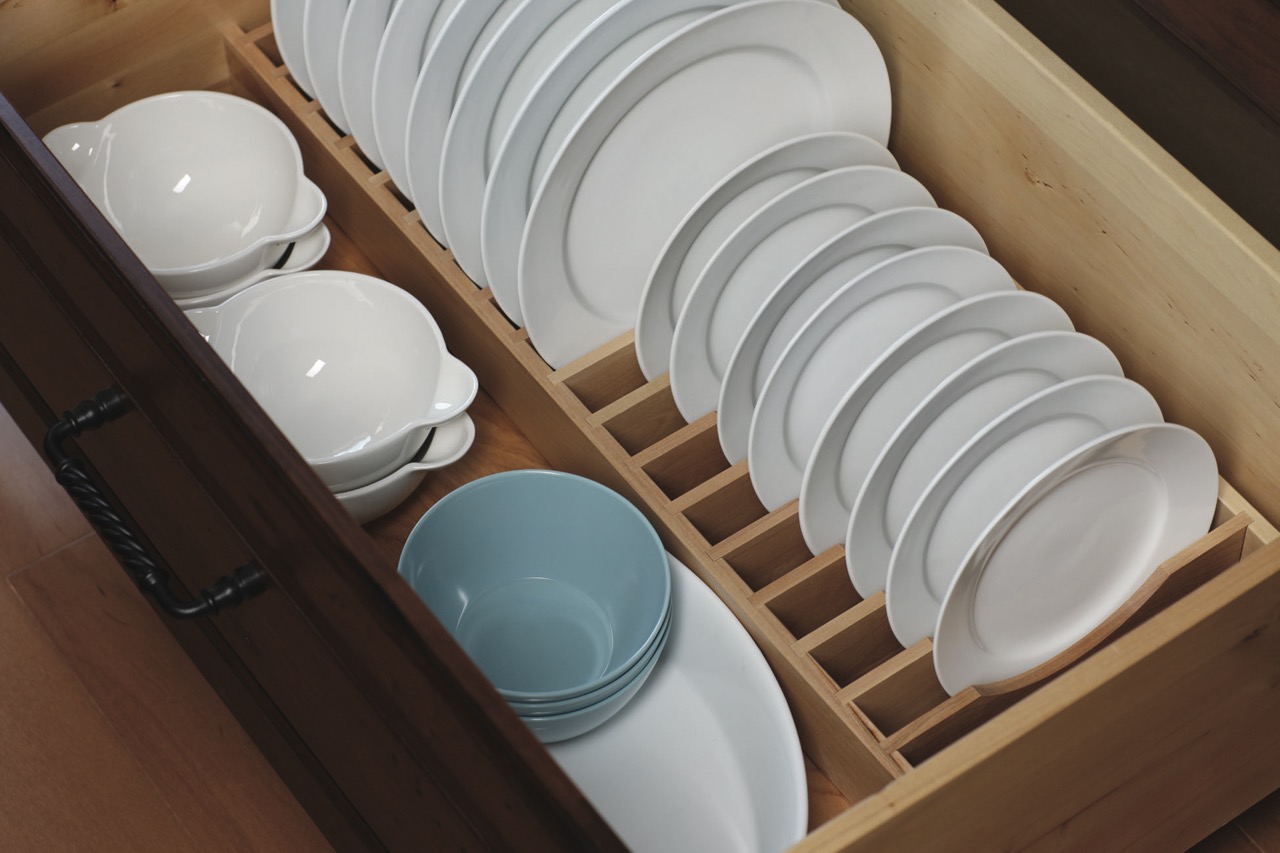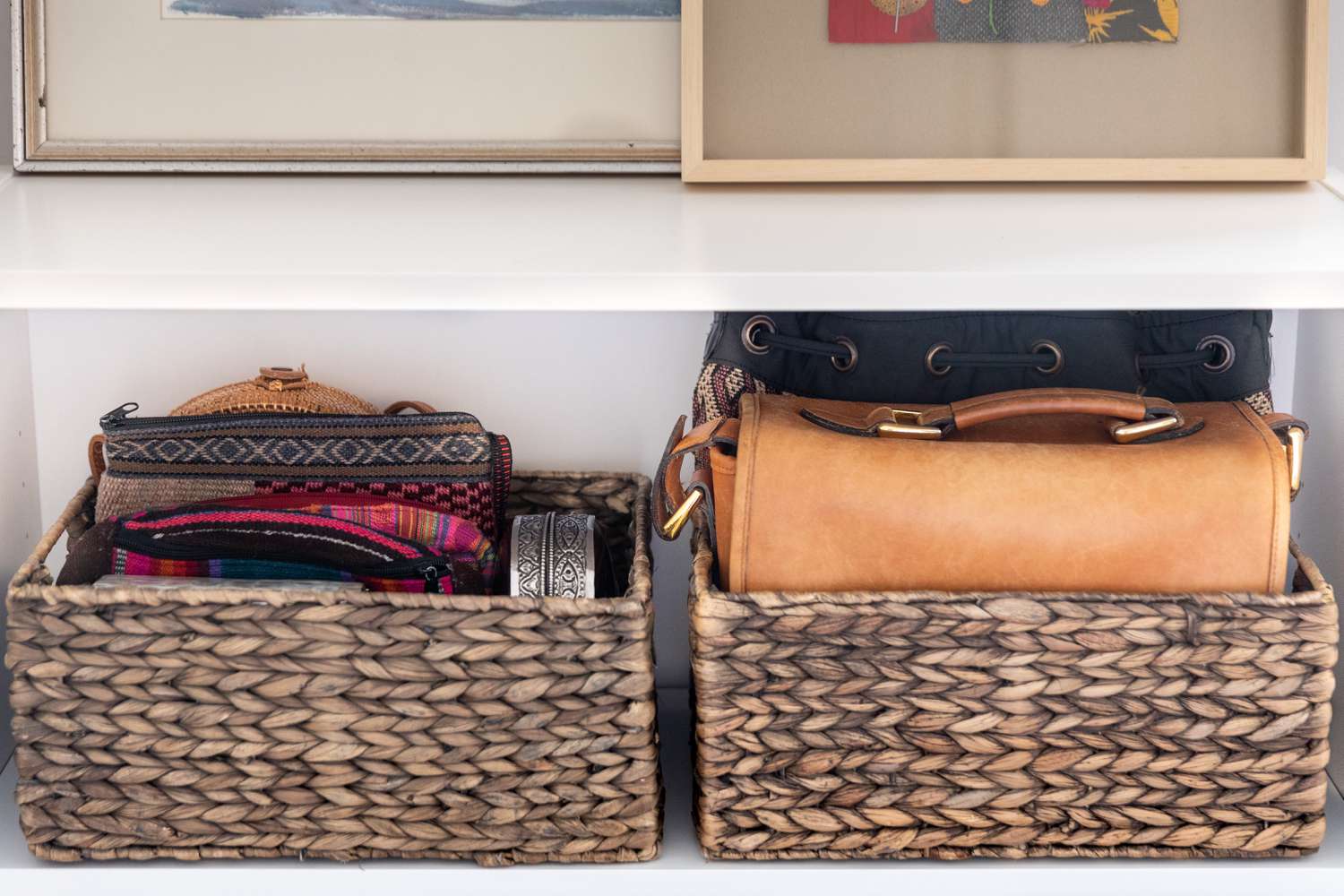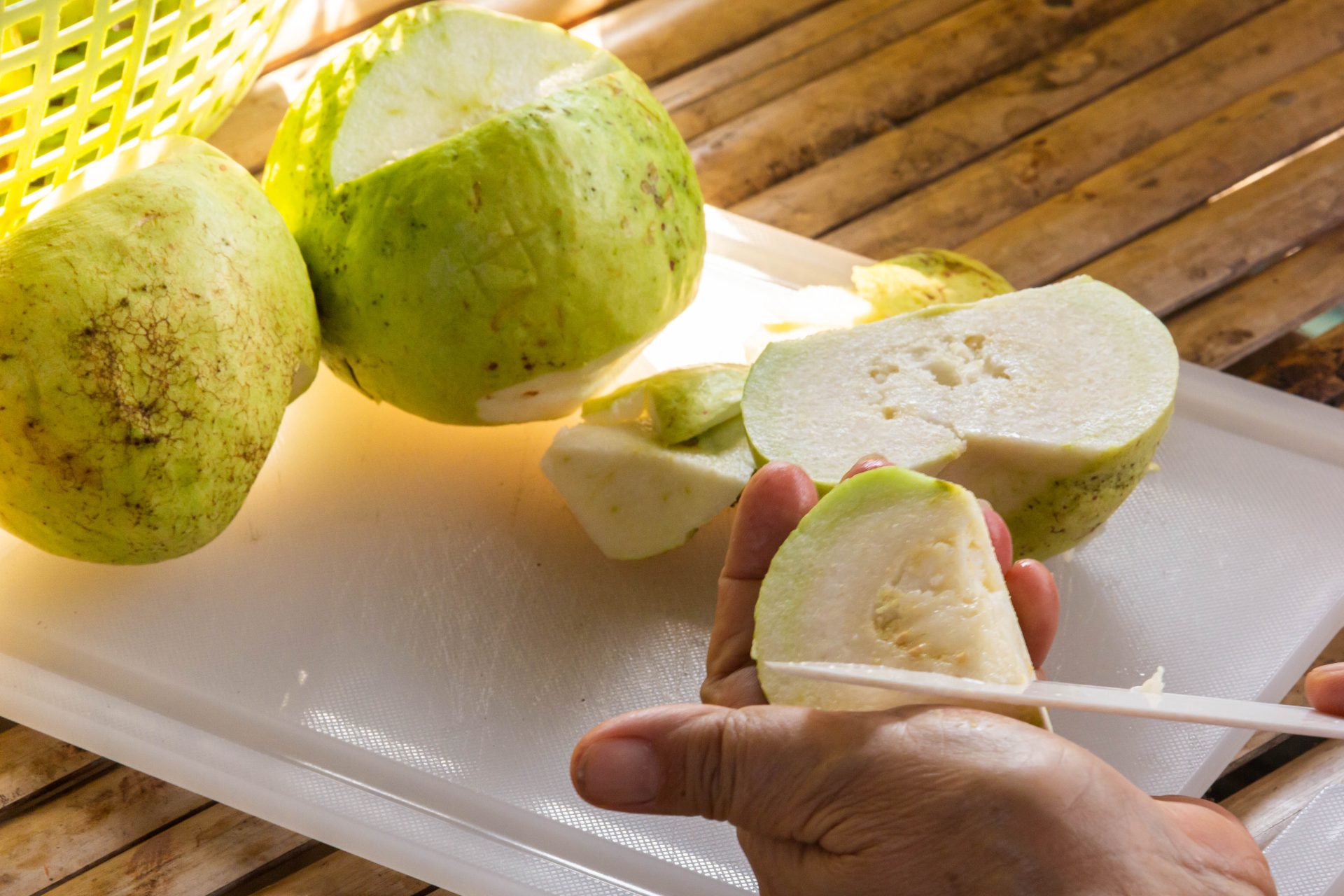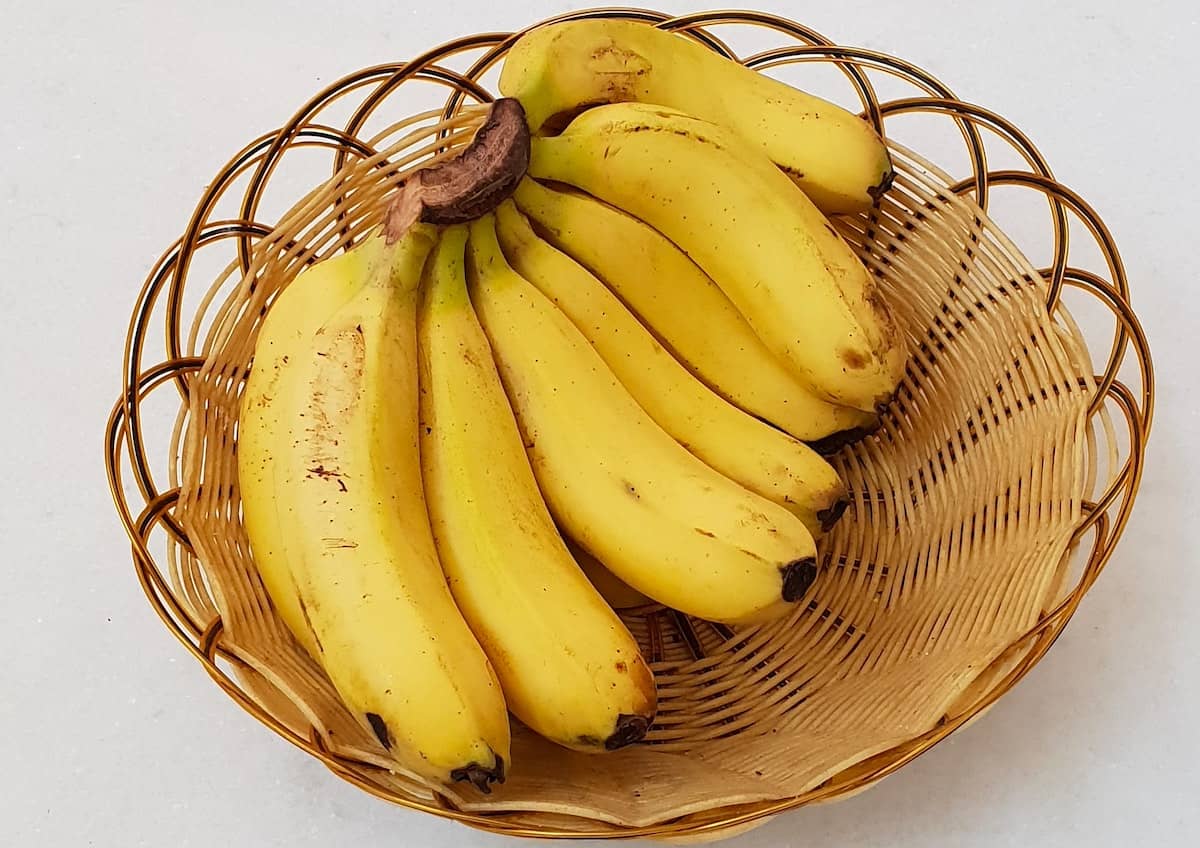

Articles
How To Store Pozole
Modified: January 6, 2024
Learn the best ways to store pozole in this helpful article. Find out how to keep your pozole fresh and delicious for longer.
(Many of the links in this article redirect to a specific reviewed product. Your purchase of these products through affiliate links helps to generate commission for Storables.com, at no extra cost. Learn more)
Introduction
When it comes to enjoying a delicious bowl of pozole, proper storage is essential to maintain its flavor, texture, and overall quality. Whether you have made a large batch or have leftovers from a restaurant, knowing how to store pozole correctly can make a significant difference. This article will guide you through the different aspects of storing pozole, including the right containers, refrigeration, freezer storage, packaging, labeling, thawing, reheating, and tips to maximize its storage life.
Pozole is a traditional Mexican soup made with hominy, meat (typically pork or chicken), and a flavorful broth seasoned with various spices and herbs. It’s a hearty and comforting dish that is enjoyed by many, and its flavors often develop even more after it’s been stored for a day or two.
Proper storage containers are crucial to keeping pozole fresh and preventing any contamination. Opt for airtight containers made of glass or BPA-free plastic to ensure a secure seal that prevents air and moisture from entering. Always use containers specifically designed for food storage, as they are made with materials that won’t leach chemicals into your pozole.
Refrigerator storage
If you plan to consume your pozole within a couple of days, refrigeration is the preferred method of storage. Allow the pozole to cool down to room temperature before transferring it to airtight containers. Divide it into smaller portions, if needed, to make reheating more manageable. Place the containers in the refrigerator promptly.
Freezer storage
If you have a larger batch of pozole or want to store it for an extended period, freezing is the best option. Freezing pozole not only preserves its taste but also extends its shelf life for up to three months. However, proper packaging is crucial to prevent freezer burn and maintain the soup’s quality.
Packaging for freezing
When freezing pozole, it’s important to use containers that are suitable for freezing. Ensure the containers are airtight and made of durable materials that can withstand the freezing temperatures without cracking. Additionally, leave enough headspace for expansion as the pozole freezes.
In addition to containers, you can also use heavy-duty freezer bags. Squeeze out as much air as possible before sealing them. Alternatively, you can use freezer-safe plastic wrap or aluminum foil to tightly wrap individual portions of pozole.
Key Takeaways:
- Proper storage of pozole is crucial for maintaining its flavor and quality. Use airtight containers, refrigeration, and freezer storage to preserve this traditional Mexican soup for future enjoyment.
- Label, date, and follow proper freezing and reheating techniques to maximize the storage life of pozole. Enjoy the rich flavors and heartiness of this comforting dish with proper storage practices.
Read more: How To Store Basil From Store
Proper Storage Containers
Choosing the right storage containers for your pozole is crucial for preserving its freshness and flavor. Here are some tips on selecting proper containers:
- Opt for airtight containers: Airtight containers are essential to prevent air and moisture from entering and affecting the quality of the pozole. Look for containers with secure seals and consider those with built-in locking mechanisms for added protection.
- Use glass or BPA-free plastic: When selecting containers, choose ones made of glass or BPA-free plastic. These materials are safe for storing food and won’t leach harmful chemicals into the pozole.
- Consider container size: Choose containers that are the appropriate size for your portion needs. If you plan to freeze pozole in individual servings, smaller containers or freezer bags may be more practical. For larger batches, larger containers are suitable.
- Look for stackable containers: Stackable containers help save space in the refrigerator or freezer. They allow you to neatly organize and store multiple containers without taking up too much room.
- Transparent containers: Opt for transparent or clear containers that allow you to easily identify the contents. It can be helpful when you have multiple containers in the freezer or refrigerator, and you want to quickly locate the pozole.
Investing in high-quality storage containers is worthwhile, as they will help keep your pozole fresh, prevent contamination, and make storage and organization more convenient.
Refrigerator Storage
If you plan to consume your pozole within a few days, refrigerating it is the ideal storage method. Follow these steps for proper refrigerator storage:
- Cool down the pozole: Allow the pozole to cool down to room temperature before transferring it to storage containers. Placing hot pozole directly into the refrigerator can raise the temperature inside and potentially spoil other items in the fridge.
- Choose airtight containers: Select airtight containers that are appropriate in size for your portion needs. Make sure the containers have secure seals to prevent air and moisture from getting in.
- Portion the pozole: If you have a large batch of pozole, it’s beneficial to divide it into smaller portions before refrigerating. This makes it easier to reheat only what you need without having to thaw and heat the entire batch every time.
- Seal the containers tightly: Ensure that the lids of the containers are tightly sealed to maintain freshness and prevent any odors from seeping into the pozole.
- Place in the refrigerator promptly: Once the pozole is cooled and portioned, promptly place the containers in the refrigerator. Keep them towards the back of the fridge, where the temperature is the coldest and most consistent.
Refrigerated pozole can typically stay fresh for up to three to four days. However, it is crucial to check for any signs of spoilage, such as a sour smell or unusual texture, before consuming. If you notice any changes, it is best to discard the pozole to ensure your safety and prevent any foodborne illnesses.
Reheating refrigerated pozole is simple and can be done on the stovetop or in the microwave. Heat it until it reaches the desired serving temperature, ensuring it is piping hot all the way through.
By following proper storage techniques, you can enjoy your refrigerated pozole for a few days while maintaining its taste and quality.
Freezer Storage
If you have a larger batch of pozole or want to store it for an extended period, freezing is the perfect option. Freezing pozole not only preserves its taste but also extends its shelf life for up to three months. Here’s how you can effectively store pozole in the freezer:
- Select freezer-safe containers: When freezing pozole, it’s crucial to use containers that are specifically designed for freezer storage. Look for containers made of durable materials that can withstand the freezing temperatures without cracking or breaking.
- Leave headspace: Allow enough headspace in the containers to accommodate the expansion of the pozole as it freezes. This step prevents the containers from cracking under pressure.
- Portion the pozole: If you anticipate only needing smaller portions of pozole at a time, consider dividing it into individual servings before freezing. This way, you can thaw and reheat only what you need, instead of thawing the entire batch.
- Remove as much air as possible: Air exposure in the freezer can lead to freezer burn and deteriorate the quality of the pozole. Before sealing the containers, squeeze out as much air as possible to minimize the risk of freezer burn.
- Use freezer bags: Alternatively, you can use heavy-duty freezer bags to store the pozole. Fill the bags, seal them tightly, and remove any excess air before placing them in the freezer.
When properly stored, pozole can stay fresh in the freezer for up to three months. However, to maintain optimal flavor and quality, it is recommended to consume it within the first two months.
Thawing frozen pozole is crucial before reheating to ensure even heating and preserve its texture. There are two safe methods for thawing pozole:
- Refrigerator thawing: Transfer the frozen pozole container to the refrigerator and allow it to thaw slowly overnight. This method ensures a gradual thaw and maintains the quality of the soup.
- Defrost in the microwave: If you need to thaw the pozole more quickly, you can use the defrost function on your microwave. Follow the manufacturer’s instructions and proceed with caution to avoid uneven thawing or partially cooking the soup.
Once thawed, heat the pozole on the stovetop or in the microwave until it reaches an internal temperature of at least 165°F (74°C) to ensure it’s heated thoroughly and safe to consume.
By following these freezer storage guidelines, you can enjoy delicious pozole whenever you’re ready, even months after its preparation.
Packaging for Freezing
Proper packaging is crucial when it comes to freezing pozole. The right packaging materials and techniques help protect the soup from freezer burn, maintain its quality, and make the thawing process more convenient. Here are some tips for packaging pozole for freezing:
- Choose freezer-safe containers: Select containers that are specifically designed for freezer storage. These containers are made of materials that can withstand freezing temperatures without cracking or deteriorating.
- Use airtight containers: Ensure that the containers you choose have airtight seals. This helps prevent air from entering and causing freezer burn or altering the taste and texture of the pozole.
- Divide into smaller portions: Consider portioning the pozole into smaller containers or freezer bags. Doing so allows you to thaw and reheat only the amount you need, minimizing waste and simplifying the serving process.
- Fill the containers appropriately: Leave some headspace in the containers to allow the pozole to expand as it freezes. This step prevents the containers from bursting due to pressure build-up.
- Label the containers: Clearly label each container with the date of preparation. This will help you keep track of the storage time and ensure you consume the oldest pozole first.
- Remove excess air: If using containers with lids, press the lids down to remove any excess air before sealing them. For freezer bags, squeeze out as much air as possible before sealing tightly.
- Stackable and space-efficient packaging: Opt for containers that are stackable to save space in the freezer. This allows you to store multiple containers without taking up too much room.
By following these packaging tips, you’ll be able to maintain the quality of the pozole during its time in the freezer. Remember to label the containers for easy identification, and always prioritize consuming the oldest batches of frozen pozole before newer ones.
To store pozole, let it cool to room temperature, then transfer it to an airtight container and refrigerate for up to 3-4 days. For longer storage, freeze in a freezer-safe container for up to 3 months.
Read more: How To Store Store-Bought Bread
Labeling and Dating
Labeling and dating your frozen pozole containers is a critical step in effective storage and organization. Properly labeled containers help you keep track of the pozole’s age, ensuring that you consume it within the recommended timeframe. Here are some guidelines for labeling and dating your frozen pozole:
- Use waterproof labels: Choose labels that are resistant to moisture and won’t easily smudge or come off in the freezer. Waterproof labels ensure that the information remains intact throughout the freezing and thawing process.
- Include the date of preparation: Write the date when the pozole was initially prepared or cooked. This information allows you to determine how long the pozole has been stored in the freezer and when it should be consumed by.
- Indicate the type of pozole and any specific flavor or variation: If you have different types or flavors of pozole stored, make sure to specify this on the label. This helps prevent confusion and allows you to choose the desired variety when you’re ready to consume it.
- Include reheating instructions, if necessary: If you have a preferred method or specific reheating instructions for the pozole, you can include them on the label. This ensures that you have quick and easy access to the information when needed.
- Place the label in a visible spot: Stick the label on the front or top of the container where it is easily visible. This way, you can quickly identify and retrieve the desired pozole without having to search through multiple containers.
Properly labeling and dating your frozen pozole containers helps you prioritize consumption based on freshness, prevents food waste, and allows for efficient rotation of your freezer stock. It is also useful for keeping track of any specific flavors or variations you may have stored.
Remember to periodically review and assess the contents of your freezer, checking the labels for any expired or outdated pozole. This practice ensures that you can enjoy the highest quality pozole while maintaining food safety standards.
Thawing and Reheating
Thawing your frozen pozole properly is essential to ensure even heating and maintain its texture and flavor. Here are two safe methods for thawing your frozen pozole:
- Refrigerator thawing: The best and safest way to thaw frozen pozole is to transfer it from the freezer to the refrigerator. Place the container in the refrigerator and allow it to thaw gradually overnight or for several hours. This method ensures a slow and even thaw, preserving the quality of the soup.
- Microwave defrosting: If you need to thaw the pozole more quickly, you can use the defrost function on your microwave. Follow the manufacturer’s instructions for defrosting frozen soups and adjust the time accordingly based on the quantity of pozole. Make sure to use a microwave-safe container and check the pozole periodically to prevent any parts from being partially cooked.
Once your pozole is thawed, it’s time to reheat it. Here are a few methods for reheating your pozole:
- Stovetop: Transfer the thawed pozole to a pot and heat it over medium-low heat, stirring occasionally to ensure even heating. Cook the pozole until it reaches the desired serving temperature, typically around 165°F (74°C).
- Microwave: If you’re reheating a small portion of pozole, you can use the microwave. Place the pozole in a microwave-safe bowl and heat it in short intervals, stirring in between to distribute the heat evenly. Be careful not to overheat the pozole to avoid drying it out.
- Crockpot or slow cooker: For larger batches of thawed pozole, you can reheat it in a crockpot or slow cooker. Set the cooker to low or medium heat and allow the pozole to warm up slowly. Stir occasionally to prevent sticking or uneven heating.
Regardless of the method you choose, it’s crucial to ensure that the pozole reaches a safe internal temperature of at least 165°F (74°C) before serving. This ensures that any potentially harmful bacteria are killed, making the pozole safe to consume.
Remember to discard any leftover pozole that has been sitting at room temperature for more than two hours to avoid the risk of foodborne illnesses. It’s always better to err on the side of caution when it comes to food safety.
By properly thawing and reheating your pozole, you can enjoy a warm and satisfying bowl of soup without compromising its quality.
Tips for Maximizing Storage Life
To ensure that your pozole stays fresh and delicious for as long as possible, follow these tips to maximize its storage life:
- Properly cool the pozole: Allow the pozole to cool down to room temperature before storing it. Placing hot pozole directly into the refrigerator or freezer can raise the temperature inside and potentially compromise the quality of other foods.
- Divide into smaller portions: If you have a large batch of pozole, consider dividing it into smaller portions before storing. This allows you to thaw and reheat only what you need, reducing waste and preserving the quality of the remaining pozole.
- Label and date the containers: Proper labeling and dating are essential for keeping track of the pozole’s storage time. Use waterproof labels to indicate the date of preparation, making it easier to prioritize consumption based on freshness.
- Follow proper freezing techniques: When freezing pozole, ensure that you use freezer-safe containers or bags and remove as much air as possible. This prevents freezer burn and maintains the quality of the soup during storage.
- Store the pozole at a constant temperature: Maintain a consistent temperature in your freezer and refrigerator to prevent fluctuations that could affect the pozole’s quality. Keep the freezer temperature at 0°F (-18°C) or below, and the refrigerator temperature at 40°F (4°C) or below.
- Practice the “first in, first out” method: When retrieving pozole from the freezer, remember to prioritize the older batches and consume them first. This ensures that the pozole is consumed within its recommended storage time.
- Minimize temperature fluctuations: Avoid frequent opening and closing of the freezer or refrigerator door, as it can cause temperature fluctuations. This can affect the quality of the pozole and potentially lead to spoilage.
- Use proper storage techniques: Ensure that your pozole is stored in airtight containers or freezer bags to prevent air and moisture from entering. This helps maintain the flavor, texture, and overall quality of the soup.
- Reheat only what you need: When reheating pozole, try to heat only the portion you plan to consume immediately. Reheating and cooling the soup multiple times can affect its quality and increase the risk of contamination.
- Regularly check for signs of spoilage: Before consuming refrigerated or thawed pozole, examine it for any signs of spoilage, such as a foul odor or unusual texture. If you notice any changes, it’s best to discard the pozole to ensure your safety.
By following these tips, you can maximize the storage life of your pozole, allowing you to enjoy it for an extended period while maintaining its taste and quality.
Conclusion
Proper storage techniques are essential for preserving the freshness, flavor, and quality of pozole. Whether you’re storing it in the refrigerator or freezer, following the right practices ensures that you can enjoy this delicious Mexican soup at your convenience. From selecting the appropriate storage containers to properly labeling and dating your pozole, each step plays a crucial role in maintaining its taste and texture.
By choosing airtight containers made of glass or BPA-free plastic, you can prevent air and moisture from affecting the pozole’s quality. Refrigerating pozole is ideal for short-term storage, while freezing extends its shelf life for months. Proper packaging techniques, such as using freezer-safe containers or bags and removing excess air, protect the pozole from freezer burn and maintain its freshness.
Thawing the pozole properly before reheating is essential to ensure even heating and maintain its texture. Whether you choose to thaw it in the refrigerator or use the microwave, following safe thawing methods is important for food safety. Reheating the pozole on the stovetop, in the microwave, or using a slow cooker brings it back to a steaming, appetizing state.
To maximize the storage life of your pozole, label and date the containers, practice the “first in, first out” method, and consistently maintain the proper temperature in your freezer and refrigerator. Regularly checking for signs of spoilage is crucial when consuming refrigerated or thawed pozole to ensure your safety.
By following these storage guidelines and tips, you can enjoy the delightful flavors of pozole whenever you desire, whether it’s a comforting meal for a weekday lunch or a festive dish to share with family and friends. Take care of your pozole, and it will reward you with its authentic taste and satisfying warmth.
So, next time you prepare a batch of pozole or have some leftovers, remember to store it correctly using the techniques discussed in this article. With proper storage, you can savor the rich flavors and heartiness of pozole, even days or months after its preparation.
Frequently Asked Questions about How To Store Pozole
Was this page helpful?
At Storables.com, we guarantee accurate and reliable information. Our content, validated by Expert Board Contributors, is crafted following stringent Editorial Policies. We're committed to providing you with well-researched, expert-backed insights for all your informational needs.















0 thoughts on “How To Store Pozole”